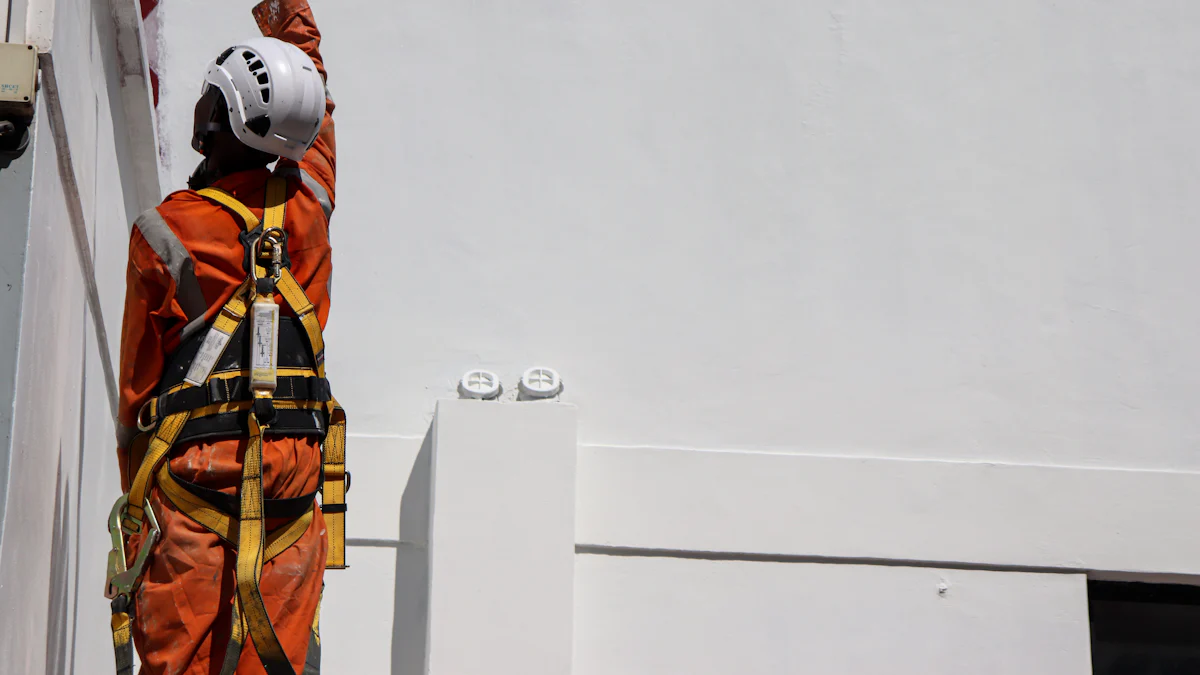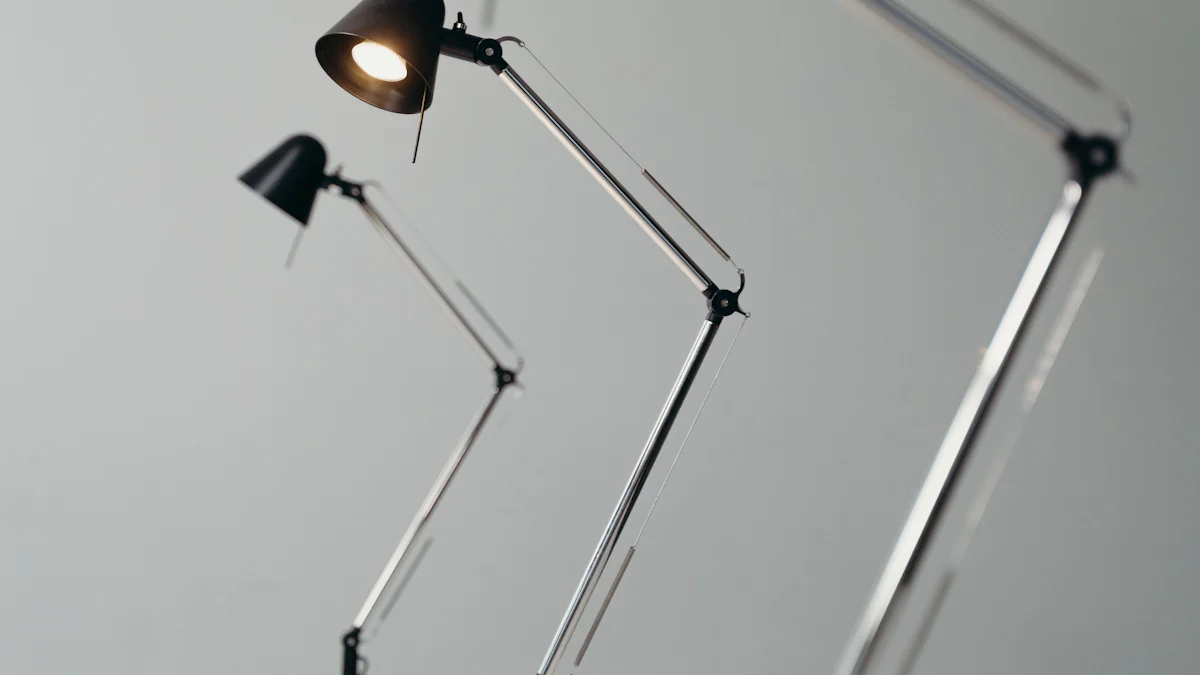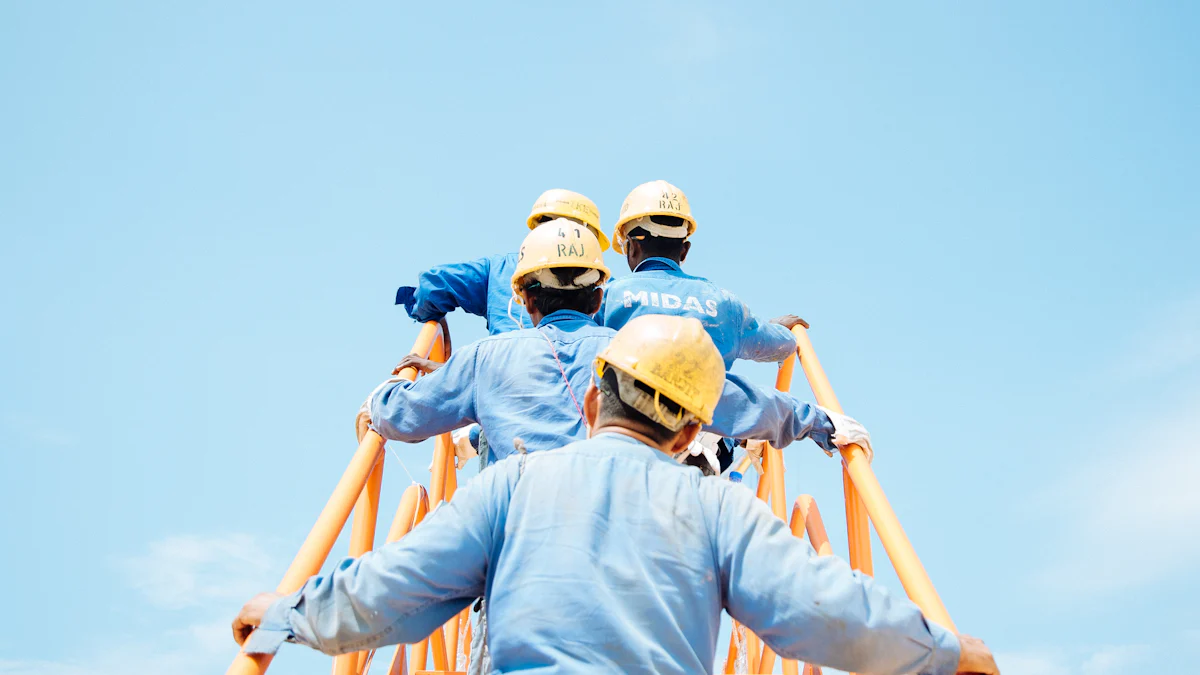Effective Work Light Usage: Safety Tips You Need to Know

Proper work light usage plays a crucial role in ensuring safety and efficiency. Poor lighting can create hazards like tripping, falling, or slipping. Inadequate illumination makes it hard to estimate the size, shape, depth, or proximity of objects. This often leads to accidents and injuries.
Following safety tips for work lights offers numerous benefits. Enhanced visibility reduces risks of accidents and mishaps. Optimal lighting levels also help mitigate mood swings and discomfort associated with dim or overly bright lights.
Choosing the Right Work Light

Selecting the right work light can make a significant difference in your workspace. The correct lighting enhances visibility and ensures safety.
Types of Work Lights
Different types of work lights suit various needs. Understanding each type helps you choose the best one for your tasks.
LED Work Lights
LED work lights offer high efficiency and long battery life. These lights are portable and durable, making them ideal for harsh conditions. The energy efficiency of LEDs reduces long-term operating costs.
Halogen Work Lights
Halogen work lights provide bright, intense light. They are suitable for outdoor use and large areas. However, they generate more heat than other types.
Fluorescent Work Lights
Fluorescent work lights produce soft, even illumination. These lights are great for indoor use where glare reduction is necessary. They consume less energy compared to halogens but more than LEDs.
Factors to Consider
When choosing a work light, consider several factors to ensure optimal performance and safety.
Brightness and Lumens
Brightness is crucial for effective lighting. Look at the lumens rating to determine how bright a work light will be. Higher lumens mean brighter light.
Durability and Build Quality
Durability matters, especially in demanding environments. Choose a work light with robust build quality to withstand rough handling and extreme conditions.
Portability and Flexibility
Portability allows you to move the work light easily between different locations. Flexibility in design, such as adjustable angles or magnetic bases, adds convenience for various tasks.
Setting Up Work Lights Safely

Proper setup of a work light ensures both safety and efficiency. Follow these tips to create a well-lit workspace.
Proper Placement
Avoiding Shadows and Glare
Position your work light to minimize shadows and glare. Shadows can obscure important details, while glare can cause eye strain. Place lights at different angles to spread illumination evenly across the work area. Adjust the height and angle of each work light to achieve optimal lighting conditions.
Ensuring Even Lighting
Even lighting helps prevent accidents and improves visibility. Use multiple work lights if necessary to cover large areas. Ensure that no dark spots remain in your workspace. This approach reduces the risk of tripping or missing crucial details during tasks.
Electrical Safety
Electrical safety is paramount when setting up any work light. Follow these guidelines to avoid hazards.
Using Grounded Outlets
Always plug your work light into grounded outlets. Grounded outlets provide an extra layer of protection against electrical shocks. Check that all outlets in your workspace are properly grounded before use.
Avoiding Overloading Circuits
Avoid overloading circuits by distributing the electrical load evenly among available outlets. Overloaded circuits can cause fires or damage equipment. Use power strips with built-in circuit breakers for added safety.
Proper Cable Management
Keep cables organized to prevent trips and falls. Secure cables along walls or under mats where possible. Use cable ties or clips to bundle excess lengths neatly out of the way.
“Reduced lighting load by 72% and 70.4 tonne reduction in annual CO2 emissions” – A study on energy-efficient lighting solutions demonstrates significant benefits, including reduced emissions and improved safety through better lighting management.
By following these steps, you ensure a safer, more efficient workspace with your work light setup.
Using Work Lights Effectively
Adjusting Light Angles
Properly adjusting the angles of your work light can make a big difference in visibility and comfort.
Task-Specific Adjustments
Different tasks require different lighting angles. For detailed work, position the work light closer to the task area. This setup ensures bright and focused illumination. For larger areas, place the work light higher up to spread light evenly. Adjusting the angle helps you see better and reduces mistakes.
Reducing Eye Strain
Eye strain can cause discomfort and reduce productivity. To minimize eye strain, avoid direct glare from your work light. Position lights so they shine away from your eyes but still illuminate your workspace effectively. Use diffusers or softer lighting options if needed.
Maintaining Work Lights
Regular maintenance keeps your work light functioning well and extends its lifespan.
Regular Cleaning
Keep your work light clean to ensure optimal performance. Dust and dirt can accumulate on the lens, reducing brightness. Use a soft cloth for cleaning without scratching surfaces. Avoid harsh chemicals that could damage the outer casing or lens.
“To maintain your work light, ensure it is kept clean and free from dust,” recommends an expert in maintenance and usage of work lights.
Always turn off and unplug the work light before cleaning it. Let it dry completely before turning it back on.
Checking for Damage
Inspect your work light regularly for any signs of damage. Look at cords for fraying or cuts that could pose electrical hazards. Check the housing for cracks or other issues that might affect safety or performance.
“Regularly inspect the cord for any damage and replace if necessary,” advises another expert in LED work lights maintenance.
Address any problems immediately to prevent accidents or further damage.
Replacing Bulbs and Parts
Replace bulbs promptly when they burn out to maintain consistent lighting levels. Keep spare bulbs handy for quick changes during critical tasks. If other parts wear out, such as switches or mounts, replace them to keep your work light in top condition.
By following these tips, you can use your work light more effectively while ensuring safety and efficiency in all tasks.
Personal Safety Measures
Ensuring personal safety while using a work light is crucial. Implementing protective gear and proper training can significantly reduce risks.
Protective Gear
Wearing the right protective gear enhances safety when working with a work light.
Safety Glasses
Safety glasses protect your eyes from bright light and debris. Always wear them to prevent eye strain and injuries. Choose glasses that fit well and offer clear vision.
Gloves
Gloves shield your hands from heat and electrical hazards. Use insulated gloves when handling a work light to avoid burns or shocks. Ensure the gloves provide a good grip for better control.
Awareness and Training
Awareness and training play vital roles in maintaining safety standards around work lights.
Educating Workers
Educate workers on the importance of proper lighting. Conduct regular sessions to teach safe handling practices for work lights. Share tips on avoiding common hazards like tripping over cables or touching hot surfaces.
Regular Safety Drills
Regular safety drills reinforce best practices. Schedule drills to simulate emergency scenarios involving work lights. Practice quick responses to potential dangers, ensuring everyone knows how to act swiftly and safely.
By following these personal safety measures, you create a safer work environment for everyone involved.
Recap the key safety tips to ensure a well-lit and safe workspace. Choose the right work light, set it up properly, and maintain it regularly. Prioritize safety by using protective gear and educating workers.
“Proper construction lighting is essential to worksite safety,” says industry experts.
Implement these tips today for a safer, more efficient environment. Your commitment to proper lighting will enhance visibility and reduce risks.
See Also
Post time: Jul-04-2024
